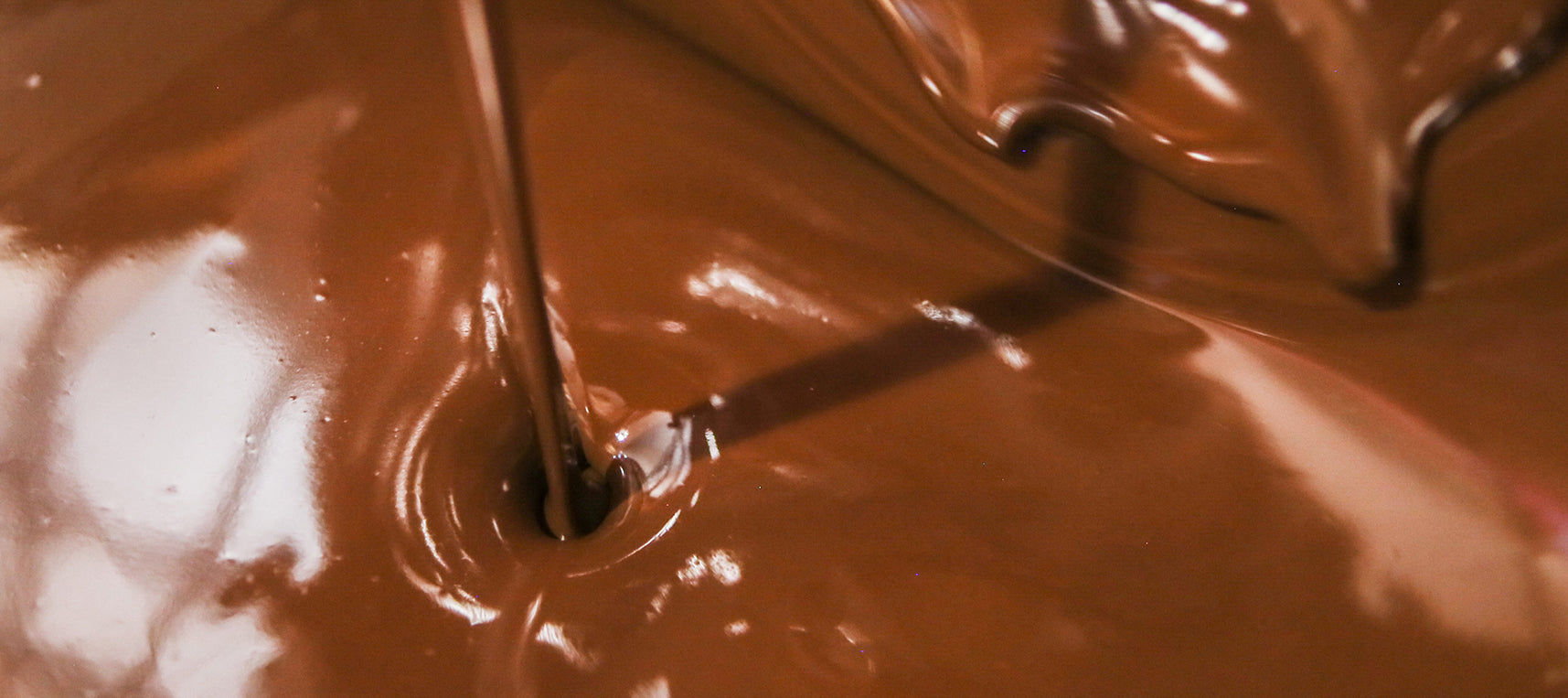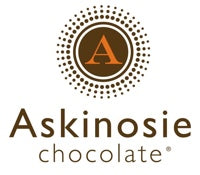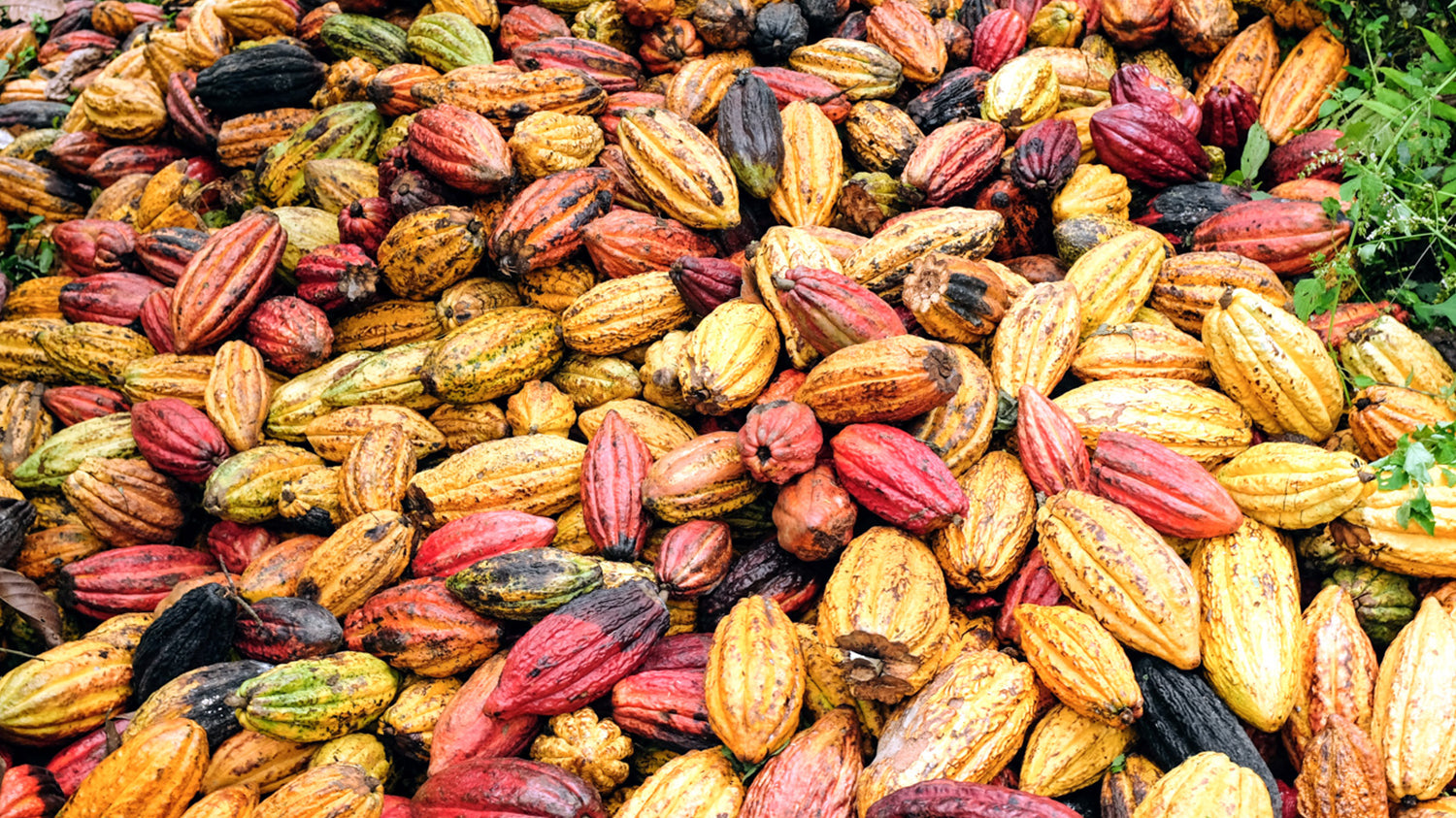
All About Chocolate- Your Chocolate Questions, Answered
With 16 (and counting) years in the craft chocolate business, we know a thing or two about chocolate, and today we're sharing that knowledge with you. These are the most common chocolate-related questions we’ve received over the years.
"Where are cocoa beans grown?"
A "cocoa belt," or cacao tree growth area, runs 20 degrees north and south of the equator. In order to thrive, cacao trees must have access to shade, plentiful water, high humidity, and high temperatures. Common cocoa bean origins include West Africa and Central America. We source our cocoa beans from more exotic locales like Ecuador, the Philippines, and Tanzania.
"Who invented chocolate?"
It was previously believed that the Maya and the Olmec people were the first to cultivate and utilize cocoa ritualistically, but new evidence has emerged from Palanda, a UNESCO world heritage site located in southeastern Ecuador, that confirms that the Mayo-Chinchipe-Marañón grew cocoa 5,000 years ago–before the Mayans or the Olmecs. The product they consumed would have been a rich beverage, similar to Tableya. The Aztecs enjoyed a beverage called xocolatl and greatly valued cocoa beans, using them as a currency and exchanging them for food and other goods. While there is some debate about who brought chocolate to Europe, by the late 1500s, drinking chocolate was a popular indulgence for members of the Spanish court. As the drink spread throughout Europe, it was mixed with cane sugar and spices, further distancing itself from its origins. It was not until the 19th century that chocolate in bar form was developed.
At Askinosie Chocolate, we acknowledge the significance of–and pay homage to–the indigenous cultures to whom cocoa bean consumption and utilization was, and remains, deeply important.
"Is chocolate a vegetable?"
Although cocoa beans are called "beans," they are not legumes but seeds contained within the cacao tree's fruit. Therefore, they are not technically a vegetable or fruit but a seed!
"Is chocolate good for you?"
It depends! Health is, of course, hugely individual, but studies have shown that unsweetened cocoa powder, cocoa nibs, and dark chocolate with zero added sugar can benefit migraine sufferers. In fact, Askinosie Chocolate products were at the center of one such study!
"What is vegan chocolate made of?"
Vegan chocolate is chocolate that is void of animal by-products, most commonly cow or goat's milk, which may be used to create white or milk chocolate offerings. At Askinosie Chocolate, many of our bars are vegan and are made with just two ingredients: cocoa beans and organic cane sugar (and cocoa butter we press ourselves, in-house, from the cocoa bean).
"What is single-origin chocolate?"
Simply put, single origin chocolate is chocolate that is produced using cocoa beans that were sourced from one location. Knowing exactly where cocoa beans come from and who farmed those beans is an essential component of the Direct Trade practice that Askinosie Chocolate observes. We also take single origin a step further, by pressing our own cocoa butter–a common ingredient found in most chocolate bars for smoother texture and creaminess–(something few other chocolate makers do) from the same origin of cocoa beans. This truly highlights the origin’s terroir, much like wine or coffee.
"How long will chocolate last?"
The shelf life of chocolate is largely dependent on the type of chocolate. The typical shelf life of chocolate when properly stored can be up to 12 months or beyond; although chocolate can stay "fresh" for up to 24 months. Chocolate with a high cocoa butter content, like white chocolate, is more difficult to store and can break down more quickly than other forms of chocolate thus the shelf life is typically a bit shorter. When chocolate isn’t stored properly, or is beyond its shelf life, you’ll notice a crumbly texture and gritty mouthfeel, a result of the chocolate having come out of temper.
"How is chocolate made?"
In the case of craft chocolate, chocolate-making is a lengthy process that starts with cocoa beans. Grown by skilled farmers, cocoa beans are harvested, sorted, fermented, and dried at origin. They are then shipped to their final destination, where the beans will be winnowed, roasted, and turned into cocoa liquor typically via a machine called a universal refiner. Expert chocolate makers will then use this liquor to create the dark and milk chocolate you are familiar with.
"Is chocolate ethical?"
Unfortunately, not all chocolate producers prioritize the needs of their consumers and their farmers in the same way that ethically-minded craft chocolate companies like Askinosie Chocolate do. If you are searching for a maker that prioritizes ethics, look for specific details and a transparency report or similar documentation on the company’s packaging, social media, or website that shares exactly how much the company pays for the cocoa beans they source, and from whom they source.
"Does chocolate contain heavy metals?"
Chocolate may contain lead and/or cadmium, but at Askinosie Chocolate, we test for lead and cadmium and have since 2019. We are proud to assure you that all of our products meet or exceed the safety standards required under current California law. Read more about our lead and cadmium testing and manufacturing practices.
Have A Specific Chocolate Question We Didn't Answer Here?
Want to learn even more about our company or our chocolate? Check out our FAQ page! You can also contact our team at info@askinosie.com and ask away, and while you're on our site, feel free to shop our delicious array of award-winning craft chocolate offerings. We've made treats suitable for everyone on your chocolate gift list.


